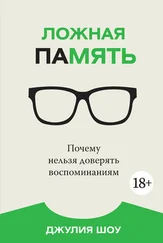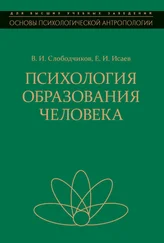Archer, J. ‘Sex differences in aggression in real-world settings: a meta-analytic review’. Review of General Psychology, 8 (4) (2004), p. 291.
Dabbs, J. M., Riad, J. K., & Chance, S. E. ‘Testosterone and ruthless homicide’. Personality and Individual Differences, 31 (4) (2001), pp. 599-603.
Cooper, S. E., Goings, S. P., Kim, J. Y., & Wood, R. I. ‘Testosterone enhances risk tolerance without altering motor impulsivity in male rats’. Psychoneuroendocrinology, 40 (2014), pp. 201-12.
Berthold, A. A. ‘Transplantation der Hoden’. Archiv für Anatomie, Physiologie und Wissenschaftliche Medicin, 16 (1849), pp. 42-46.
Berthold, A. A., & Quiring, D. P ‘The transplantation of testes’. Bulletin of the History of Medicine, 16 (1944), p. 399.
Carre, J. M., Ruddick, E. L., Moreau, B. J., & Bird, B. M. ‘Testosterone and human aggression’. In: The Wiley Handbook of Violence and Aggression, Peter Sturmey (ed.), Hoboken, NJ: Wiley-Blackwell, 2017.
Mazur, A., & Lamb, T. ‘Testosterone, status, and mood in human males’. Hormones and Behavior, 14 (1980), pp. 236-46; https://doi.org/10.1016/0018-506x(80)90032-x.
Crockett, M. ‘The trolley problem: would you kill one person to save many others?’ The Guardian, 12 December 2016; https://www.theguardian.com/science/head-quarters/2016/dec/12/the-trolley-problem-would-you-kill-one-person-to-save-many-others/.
Skulmowski, A., Bunge, A., Kaspar, K., & Pipa, G. ‘Forced-choice decision-making in modified trolley dilemma situations: a virtual reality and eye tracking study’. Frontiers in Behavioral Neuroscience, 8 (2014).
Bleske-Rechek, A., Nelson, L. A., Baker, J. P., Remiker, M. W., & Brandt, S. J. ‘Evolution and the trolley problem: people save five over one unless the one is young, genetically related, or a romantic partner’. Journal of Social, Evolutionary, and Cultural Psychology, 4 (3) (2010), pp. 11527.
Greene, J. D., Morelli, S. A., Lowenberg, K., Nystrom, L. E., & Cohen, J. D. ‘Cognitive load selectively interferes with utilitarian moral judgment’. Cognition, 107 (3) (2008), pp. 1144-54.
Garrigan, B., Adlam, A. L., & Langdon, P E. ‘The neural correlates of moral decision-making: a systematic review and meta-analysis of moral evaluations and response decision judgements’. Brain and Cognition, 108 (2016), pp. 88-97.
Jentzen, J., Palermo, G., Johnson, L. T., Ho, K. C., . . . & Teggatz, J. ‘Destructive hostility: the Jeffrey Dahmer case: a psychiatric and forensic study of a serial killer’. American Journal of Forensic Medicine and Pathology. 15 (4) (1994), pp. 283-294.
Terry, D. ‘Jeffrey Dahmer’. The New York Times, 29 November 1994; http://www.nytimes.com/1994/11/29/us/jeffrey-dahmer-multiple-killer-is-bludgeoned-to-death-in-prison.html?mcubz=0.
Terry. ‘Jeffrey Dahmer’.
Wiest, J. B. Creating Cultural Monsters: Serial Murder in America. Boca Raton, FL: CRC Press, 2016.
Hodgkinson, S., Prins, H., & Stuart-Bennett, J. ‘Monsters, madmen . . . and myths: a critical review of the serial killing literature’. Aggression and Violent Behavior, 34 (2017), pp. 282-89.
Апология Сократа. Пер. С. А. Жебелева // Полное собрание творений Платона в 15 томах. Т 1. — Петербург: Academia, 1923.
McAndrew, F. T., & Koehnke, S. S. ‘On the nature of creepiness’. New Ideas in Psychology, 43 (2016), pp. 10-15.
Bar, M., Neta, M., & Linz, H. ‘Very first impressions’. Emotion, 6 (2006), pp. 269-78; http://dx.doi.org/10.1037/1528-3542.6.2.269.
Porter, S., England, L., Juodis, M., Ten Brinke, L., & Wilson, K. ‘Is the face a window to the soul? Investigation of the accuracy of intuitive judgments of the trustworthiness of human faces’. Canadian Journal of Behavioural Science / Revue canadienne des sciences du comportement, 40 (3) (2008), p. 171.
Petridis, A. ‘One person’s “edgy” model is another’s gun-toting “street terrorist”’. The Guardian, 3 July 2014; https://www.theguardian.com/lifeandstyle/lostinshowbiz/2014/jul/03/edgy-model-gun-toting-street-terrorist-jeremy-meeks.
Nisbett, R. E., & Wilson, T. D. ‘The halo effect: evidence for unconscious alteration of judgments’. Journal of Personality and Social Psychology, 35 (4) (1977), p. 250.
Thorndike, E. L. ‘A constant error in psychological ratings’. Journal of Applied Psychology, 4 (1920), pp. 25-29.
Gibson, J. L., & Gore, J. S. ‘You’re OK until you misbehave: how norm violations magnify the attractiveness devil effect’. Genderissues, 32 (4) (2015), pp. 266-78.
Вы когда-нибудь замечали, что слова devil (дьявол) и evil (зло) отличаются всего одной буквой? Это напоминает нам, как тесно связаны религиозные понятия «дьявол» и «проступок». — Прим. авт.
Hosoda, M., Stone-Romero, E. F., & Coats, G. ‘The effects of physical attractiveness on job-related outcomes: a meta-analysis of experimental studies’. Personnel Psychology, 56 (2) (2003), pp. 431-62.
Phelan, S. M., Burgess, D. J., Yeazel, M. W., Hellerstedt, W. L., . . . & Ryn, V. M. ‘Impact of weight bias and stigma on quality of care and outcomes for patients with obesity’. Obesity Reviews, 16 (4) (2015), pp. 319-26.
Adolphs, R., & Tusche, A. ‘From faces to prosocial behavior: cues, tools, and mechanisms’. Current Directions in Psychological Science, 26 (3) (2017), pp. 282-87.
Korva, N., Porter, S., O’Connor, B. P., Shaw, J., & Brinke, L. T. ‘Dangerous decisions: influence of juror attitudes and defendant appearance on legal decision-making’. Psychiatry, Psychology and Law, 20 (3) (2013), pp. 384-98.
Wilson, J. P., & Rule, N. O. ‘Facial trustworthiness predicts extreme criminal-sentencing outcomes’. Psychological Science, 26 (8) (2015), pp. 1325-31.
Santos, S., Almeida, I., Oliveiros, B., & Castelo-Branco, M. ‘The role of the amygdala in facial trustworthiness processing: a systematic review and meta-analyses of fMRI studies’. PLOS ONE, 11 (11) (2016); https://doi.org/10.1371/journal.pone.0167276.
Bonnefon, J. F., Hopfensitz, A., & De Neys, W. ‘Can we detect cooperators by looking at their face?’ Current Directions in Psychological Science, 26 (3) (2017), pp. 276-81.
McAndrew & Koehnke. ‘On the nature of creepiness’.
Langlois, J. H., & Roggman, L. A. ‘Attractive faces are only average’. Psychological Science, 1 (2) (1990), pp. 115-21.
Sofer, C., Dotsch, R., Wigboldus, D. H., & Todorov, A. ‘What is typical is good: the influence of face typicality on perceived trustworthiness’. Psychological Science, 26 (1) (2015), pp. 39-47.
Читать дальше
Конец ознакомительного отрывка
Купить книгу












